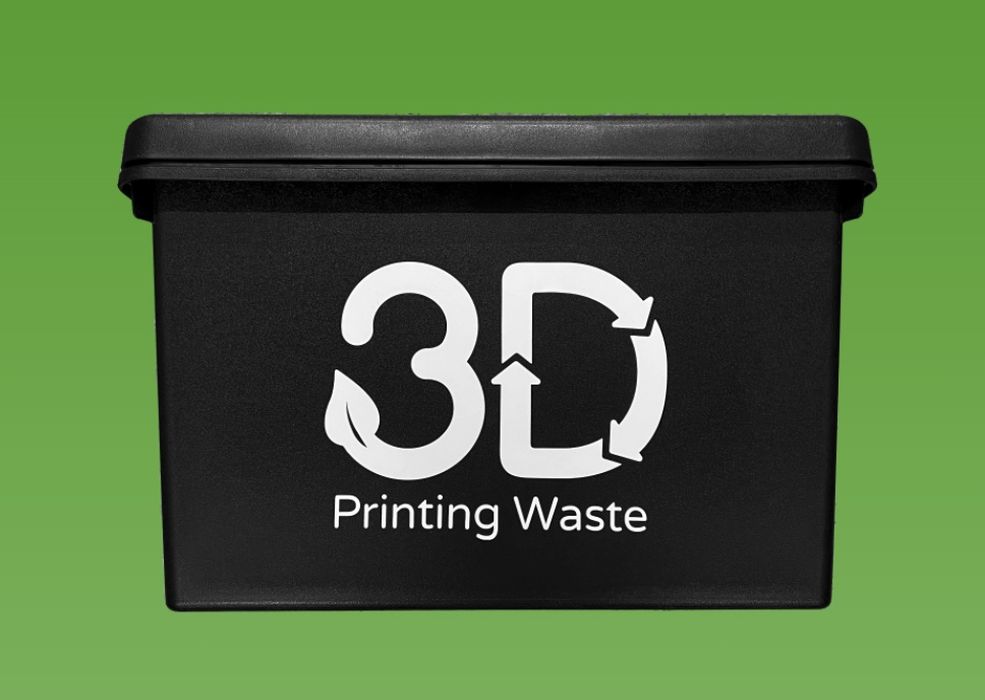
I’ve just noticed another PLA recycling service, specifically for 3D print waste.
The venture, based in Bradford, UK, is “3D Printing Waste”, who describe their mission:
“3D printing is a double edged sword. Whilst fundamentally additive, the use of plastic as a feedstock could exacerbate the plastic problem without efficient resource recovery.
3DPW offers viable end-of-life solutions for 3D-printed waste that is not currently recycled or reused, thus preventing further plastic pollution of land and marine environments.”
This seems like a pretty good idea, as 3D printer operators tend to end up with a great deal of waste material, typically from these sources:
- Failed prints, spaghetti
- Removed support material
- End-of-the-spool filament too short to be used
- Discarded prints from iterative designs
- Excess parts from production runs
One way or another, 3D printer operators will end up with a great deal of scrap plastic. I have a large box here at the lab where I collect such material. But what do I do with the box when it’s full?
That’s where 3D Printing Waste comes in. Their approach is to send you a standard box that you can fill with your scrap, and it’s returned to them. There they process it back into three different solution forms:
- Recycling – supplying waste as feedstock for manufacturing processes such as Injection Moulding – reducing reliance on virgin polymers.
- Upcycling – utilising plastic waste as input material for the production of value-added creative products – giving plastic waste a new life.
- Pelletising – plastic wasted is shredded / grinded, melted and reformed as pellets for resale as secondary materials – increasing usage of recycled polymers.
They accept only PLA scrap materials, so the user will have to sort out any PETG, ABS, empty spools or other materials from the shipment.
Note that this is a UK service, as shipping waste longer distances would be financially infeasible.
The cost of the service is £54 (US$68) for a 45L box, and £168 (US$211) for a 154L box. For reference, the 45L box would represent a volume of 355mm on a side, whereas the larger box would be 536mm on a side.
A quick test here shows my 350mm box is near full and weighs 8.5kg, or about nine spools worth of filament. This works out to about US$8 per spool of material to ship and process the waste, were I located in the UK.
Is that a good deal? Is that a price people are willing to pay? I’m not so sure. When a spool typically costs US$20, would you be willing to pay a 40% premium to ensure recycling takes place? Would you buy a spool at 40% markup to guarantee free recycling?
I have a suspicion that a service of this type would be best used by larger operations running small 3D printer farms. They would generate larger and consistent amounts of waste that could justify the fee as it would help ensure the operation’s green status. But I just can’t see any individuals using a service like this unless they are utterly dedicated to recycling and willing to pay the costs.
There have been other attempts at recycling 3D printer waste, and few have been successful because it’s simply a very challenging business. One example from a couple of years ago was “Project PLA”, which had a similar business model: send a box, return it with scraps. Unfortunately, Project PLA didn’t last very long.
While the notion of recycling 3D printer waste is attractive, the devil is in the details. There are several fundamental issues that must be overcome:
- Sorting materials of each type
- Mixing colors of materials
- Secondary shipping costs to return material
I don’t see these being resolved anytime soon.
